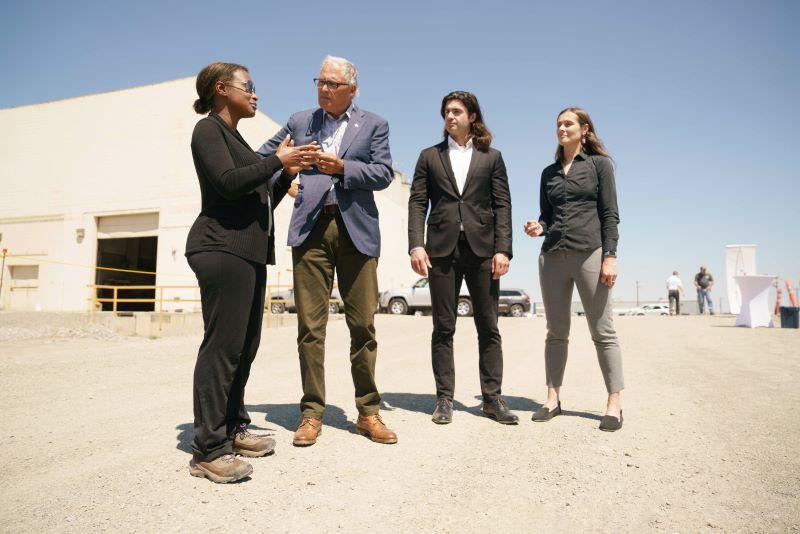
Twelve broke ground on a power-to-liquid sustainable aviation fuel (SAF) production facility in Moses Lake on July 11.
The startup expects the facility to start producing its E-Jet fuel in the middle of 2024 at an initial rate of five barrels per day or 40,000 gal. per year, the company said on July 11. Twelve says it has plans to “quickly” increase production capacity beyond that rate in years following.
Twelve says its E-Jet SAF has up to 90% lower lifecycle greenhouse gas emissions compared to conventional, petroleum-based jet fuel. The synthetic fuel is “drop-in ready,” meaning it works with conventional aircraft and airport infrastructure. The company’s SAF meets ASTM International specifications, it says.
Alaska Airlines, Microsoft and Shopify will be the first customers of SAF from the Moses Lake plant, Twelve says. The fuel will be shipped west to Seattle-Tacoma International Airport, where Alaska Airlines will fly aircraft using the avgas.
Fuel produced from the production facility will be used in regular airline operations as part of a three-party agreement between Alaska Airlines, Microsoft and Twelve. That SAF would allow Microsoft, which frequently flies local Alaska Airlines routes, to claim all of Scope 3 credits, said Ashwin Jadhav, VP of business development of Twelve, at the ICAO SAF Stocktaking conference on July 12.
Twelve makes SAF by recycling carbon dioxide—captured from an emissions source, typically nearby industrial operations—and then using electrolysis to convert it into carbon monoxide. The company then takes green hydrogen—derived from water using electrolysis that is powered by a renewable energy source, such as solar panels, wind turbines, hydroelectric dams or nuclear power—and combines it with the carbon monoxide in a Fischer–Tropsch process to create SAF.
The startup did not disclose what its Moses Lake carbon dioxide feedstock was or where it was coming from. Green hydrogen sources were also not disclosed. It did not immediately respond to a request for comment.
“We only focus on biogenic sources of carbon dioxide, where the concentration is very specific and it’s a much cleaner source of the carbon dioxide so it’s more efficient to convert it,” Jadhav said at the ICAO conference. “So, sources like pulp and paper factories, corn, ethanol plants, biogas facilities, etc.”
In addition to buying green hydrogen, Twelve also sometimes generates it with on-site electrolysis, Jadhav added.
The company also did not specify what renewable energy sources would power its Moses Lake facility.
Eastern Washington is home to 18 mainstem dams on the Columbia River and its main tributary, the Snake River. In 2022, hydroelectric power accounted for 67% of Washington state’s total electricity generation, according to the U.S. Energy Information Administration.
“Washington is the perfect location for our facility, with its abundant renewable energy resources to power our carbon transformation process and longstanding global leadership in the aviation industry,” Twelve co-founder and CEO Nicholas Flanders said at the Paris Air Show in June.
